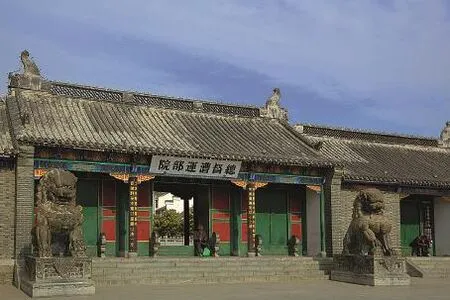CHARM OF THE GRAND CANAL
Text by Wang Ming Translated by Hu Nan Photos by Wang Yuanchang & CFP
CHARM OF THE GRAND CANAL
Text by Wang Ming Translated by Hu Nan Photos by Wang Yuanchang & CFP
In 2014, the Grand Canal, the longest artifi cial waterway in the world, was inscribed on the World Heritage List. It consists of three sections of the Beijing-Hangzhou Canal, the Grand Canal in the Sui and Tang Dynasties and the Hangzhou-Ningbo Canal. Starting at Beijing, it passes through Tianjin and the provinces of Hebei, Henan, Anhui, Shandong, Jiangsu and Zhejiang to the city of Ningbo, linking fi ve major river basins of the Haihe River, Yellow River, Huaihe River, Yangtze River and Qiantang River. It has formed an all-encompassing network used for transportation, commodity fl ow and culture exchange, which ensured the country’s economic prosperity and stability.

The Hangzhou canal.杭州运河夕照。汪建伟 摄
运河风韵
2014年,跨8个省(市),由京杭大运河、隋唐大运河和浙东运河三部分组成的中国大运河,被列入世界文化遗产名录。它自北向南贯通海河、黄河、淮河、长江和钱塘江五大水系,从而形成一个南北东西全方位的水陆交通网、商品流通网和文化汇通网。

Boatnik in the canal.运河水上人家。
Shu Yi, the Honorary President of the Panel for the Grand Canal affi liated with the Chinese Society of Cultural Relics, indicated that if the Great Wall is thought to be the backbone of China, the Grand Canal will feature the resemblance of an artery. Moreover, the Grand Canal is still in use as a major means of internal communication and continuously producing profound benefi ts to the country.
The Grand Canal has contributed to the development and prosperity of the cities along the canal. Acting as a key component for commodity gathering and distribution in cities alongside the waterway, Tianjin, Jining, Huai'an, Yangzhou, Suzhou, Hangzhou, Ningbo and other cities have witnessed how the Chinese endured changes and pursued progress, as well as how different cultures along the canal integrated with each other. The history of the Grand Canal is also a history of fusion in this region.
ln the late Spring and Autumn period, Fuchai, King of the State of Wu, ordered a canal be constructed for trading purposes, as well as a means to ship supplies. This canal became known as the Han Gou (邗沟, "Han Conduit"). Work began in 486 BC, from south of Yangzhou to north of Huai'an in Jiangsu, and within three years the Han Gou had connected the Yangtze with the Huai River by means of existing waterways, lakes, and marshes.
lt is known as one of the oldest sections of the Grand Canal in its current formation.
The canal made numerous contributions to the diversity, integration and prosperity of Chinese culture, as it has allowed Zhongyuan Culture to spread to the north and south, while the nomadic cultures from the northern grasslands and the Jiangnan Culture from the southern coastal areas were able to diffuse to the central parts of China. This has allowed for remarkable similarities between these many different cultures.
For instance, a New Year picture is a form of Chinese coloured wood block print, used for decoration during the Chinese New Year holiday. Yangliuqing is one special style from Tianjin. lt is believed that Yangliuqing is partly infl uenced by Suzhou-style pictures. Despite their distance, these are two famous styles used for these traditional New Year pictures.
Obviously, the canal was tightly linked with the ancient Silk Road. The Grand Canal in the Sui and Tang Dynasties and the ancient Silk Road both depart in Louyang, a pivotal city that was very infl uential during the Sui and Tang periods, while the Zhejiang-Ningbo Canal conjuncts the Maritime Silk Road in Ningbo, a coastal city in Zhejiang Province. Even in the Kangxi and Qianlong period of the Qing Dynasty, emperors invited delegations from the Netherlands and UK to travel to the capital through the canal, as a part of the diplomatic protocol.
Over the past 2000 years, the section from Jining of Shandong province to Ningbo has remained navigable, shipping grain, silk, tea and other commodities. lt includes abundant historical sites and tourism destinations such as ancient kilns, dwellings, streets, bridges, temples, towers, lanes and wharves. Now alongside the canal are bustling areas, and people enjoy the richness and ease that comes with life on the water.

The color of the night in Shaoxing.古城绍兴夜色。

The site of the Water Transport Department(Ming Dynasty).位于淮安城中心、历史上主管全国漕运的唯一机构总督漕运部院旧址即景。

The sunset of the Tianjin Bay.天津湾夕照。
中国文物学会大运河专业委员会名誉会长舒乙曾说:“如果说长城是骨骼,是脊梁,大运河就是血脉。而且大运河最了不起的地方在于,它现在一直在使用,而且有非常大的经济效益。”
中国大运河的大贯通和迅速开发,带动了沿岸城市的兴盛与繁荣。在天津、济宁、淮安、扬州、苏州、杭州、宁波等城市,成为重要商品集散地的同时,更串联起中华民族上下求索、饱经沧桑的历史脉络和京津、齐鲁、淮扬、吴越等区域文化相融合的文化流变。历史变迁,岁月流转,透过一扇扇城市窗口,寻着自北向南的水可索到中国大运河与沿线城市相互羁绊的前世今生。
“吴城邗,沟通江淮。”《春秋左氏传》中,关于公元前486年吴王夫差开凿运河的事,只写了这7个字。因途经邗城,故得名“邗沟”。自此,这条起于扬州止自淮安、沟通了长江和淮河两大河流的运河,成为世界上第一条有确切纪年的大型运河,亦是中国大运河的前身及开端。
大运河把中原文化带到了南北方,又把北方草原游牧文化与南方鱼米桑茶水乡文化传到中原,实现了中华文化的多元、互补与共繁,形成诸多相同或相近的地理、文化、建筑和宗教等特征。如闻名中外的天津杨柳青年画则是吸收了苏州桃花年画的艺术风格,形成了年画经典“南桃北柳”。
大运河仿佛为丝绸之路接上了手脚,隋唐运河与陆路丝绸之路起点在古都洛阳重合。而浙东运河则通过宁波与海上丝绸之路连通,“南则闽广,东则日本,北则高句丽,商舶往来,物化丰衍”,从而使宁波实现了在“海上丝绸之路”中的独特地位。清朝康熙、乾隆年间,荷兰、英国等国的使团来中国时,中国当时的皇帝都会请他们沿大运河一路北上到达京城,作为重要的礼节之一。
悠悠两千余载,济宁以南的京杭大运河段及延伸入海段的浙东运河,时至今日一刻都未曾停息,四通八达,运输繁忙,两岸稻香,无限风光。古镇、古街、古桥、古寺、古纤道等历史遗存和景观众多,特色最为显著的一段。至今运河两岸的市井仍旧繁华热闹,运河水上人家依旧过着临水而居的惬意生活。

